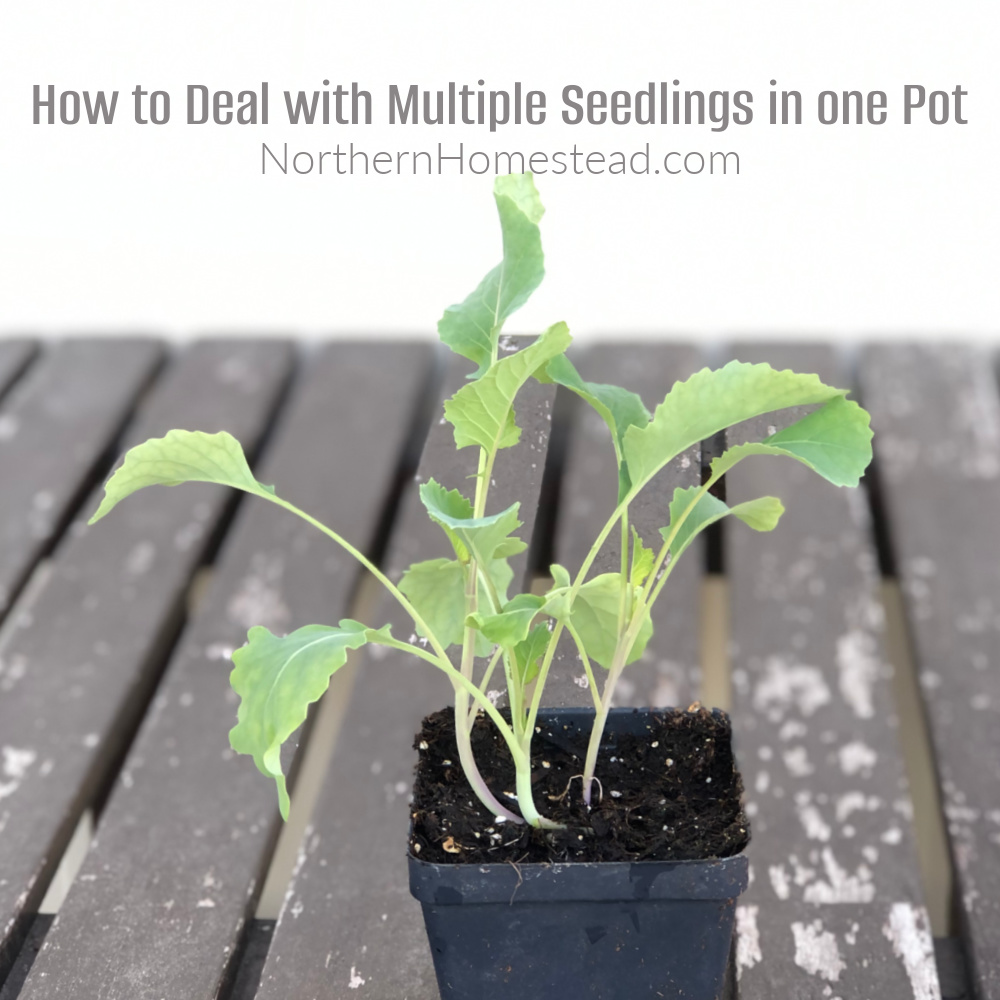
Seedlings are great for short-season gardeners. They help us to extend the growing season upfront. In this blog article, we are looking into how to deal with multiple seedlings in one pot.
With good seeds, we often get a 100% germination rate. Since we plant about 2-3 seeds per pot, we end up with 2-3 plants in one pot to ensure we get at least one plant. Seed germination depends on the age of the seeds. Different types of seeds have different shelf life. Read more here about seed storage and shelf life.
The same is true for seedlings from a garden center. The number of seeds planted and sold in one container varies greatly. Often, there is more than one plant in one seedling pot. Take a close look; what you think is one seedling might be multiple plants. As a first-time gardener, do not assume they should be planted together if a greenhouse sells multiple plants in one seedling. There is a ‘too close’ for some plants.
Let’s look at what plants can be planted together and, if not, how to separate multiple seedlings to get the most out of it.
How many seeds to plant in one container
Note that this blog article does not discuss starting seeds in one seed tray and pricking out (transplanting) the healthiest seedlings. That is a method to avoid multiple seedlings in one container. Follow the link to read more about it. Here, we are looking into how to deal with multiple seedlings in one pot to get the best results.
Types of plants that can be grown together because they like growing in a group and seedlings that can be easily separated can all be planted in one starter pot. The advantage is that you will need less seedling pots, potting mix, heating mats, and space to grow them, especially if you use a grow light. It can save you time, work, and money. To utilize this advantage is a great idea.
For plant varieties to grow in a cluster, plant 5-6 seeds in one hole to keep 3-4 plants to be grown together. For plants, I know I will be separating; square pots are a good choice. Planting 1-2 to keep one in each corner makes for easy separation. A larger pot is usually not needed; keep them for larger plants.
For plants that do not like to grow together or separate easily, plant one for large and 2-3 tiny seeds. Larger seeds usually have better germination and need more space to grow. Using larger containers for them is also a good idea.
Once the seedlings have a second set of leaves, remove the extra seedlings to the number of plants you want to keep, giving the remaining seedlings more space to grow into healthier plants. Read more about starting seeds indoors here.
What multiple seedlings can be kept together?
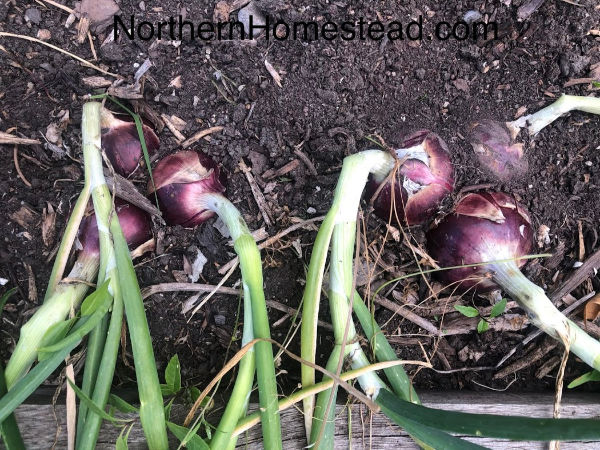
Bulb plants like onions, beets, and radishes love growing together. These vegetables can be sown and grown in clumps. You need to give enough room for a cluster to grow; otherwise, they seem to like the company.
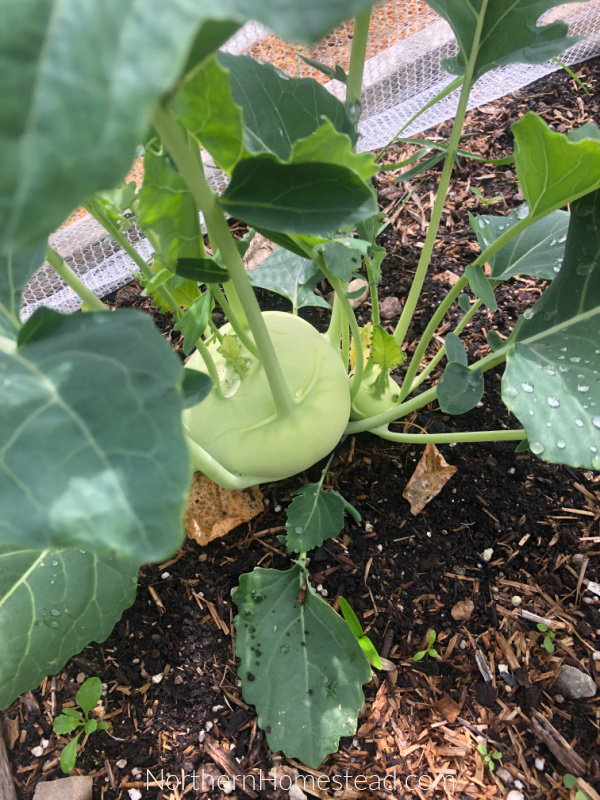
Kohlrabi is another bulb plant that can be grown together. Sometimes, in a cluster, one plant will be dominant and much bigger than the other.
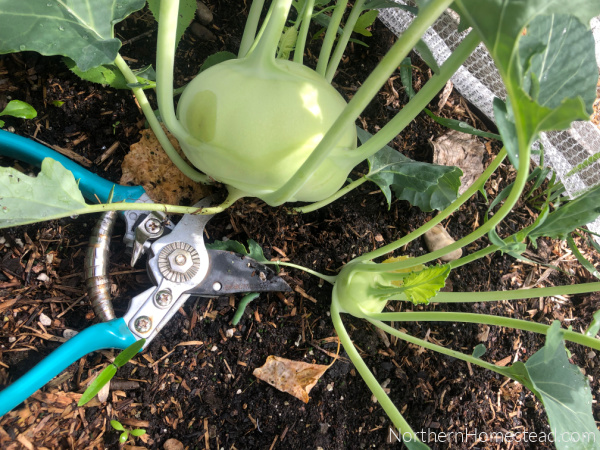
For a home garden, extending the harvesting window is a good option. Cut away the big bulb, leaving the small one to grow larger.
Herbs also do not seem to mind growing together. Use common sense here; if you have an herb cluster that looks like a dozen plants, it is better to separate them. If it’s just a few, they might be happy together. In our experience, herbs are easy to separate, so you get more out of a cluster.
Which multiple seedlings can be easily separated?
Nightshade family plants, like tomatoes, peppers, eggplants, and ground cherries, grow roots along the stem. That’s why we can grow tomatoes from cuttings.
Nightshade plants are probably the most forgiving to be separated, but if possible, do it as long as the seedlings are young. If you get multiple seedlings in one pot from a greenhouse, separate them immediately and let them build more roots in a bigger pot before planting them in the garden.
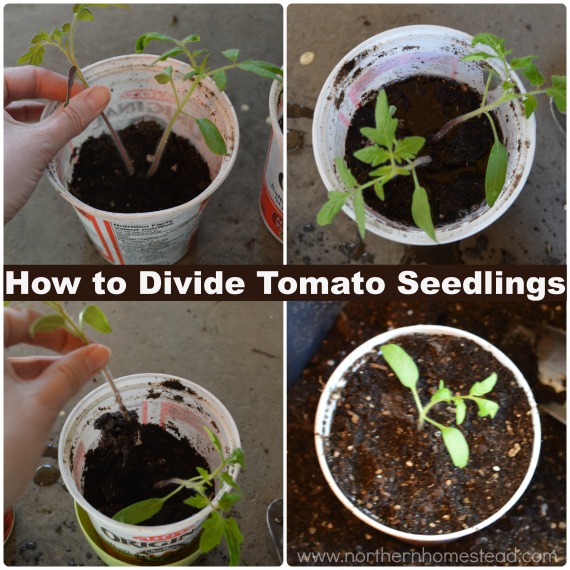
If the seedlings do not grow too close, you can even pull out the additional plant without disturbing the roots from the primary seedling. Water the plant well (it should be muddy), then gently pull the extra seedling and plant it immediately into a separate pot, burying more of the stem.
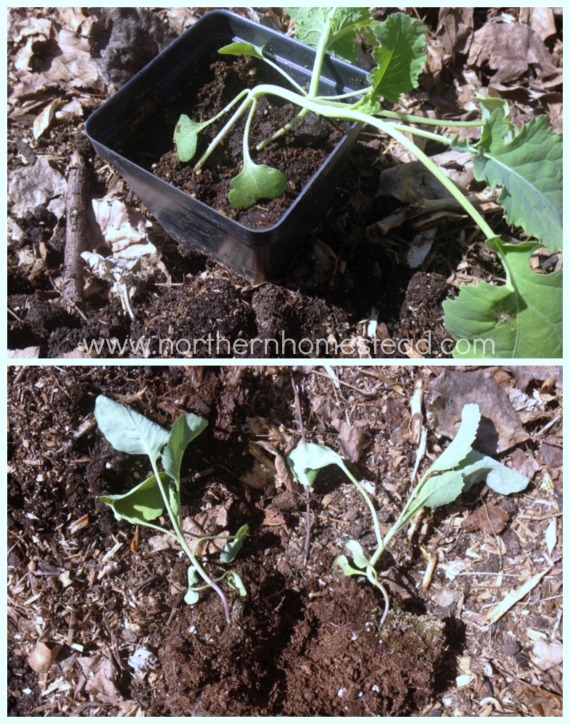
Cabbage family plants also respond well to being separated. Except for kohlrabi, none of them do well when planted together. So it is worth it to separate the seedlings to get more healthy plants.
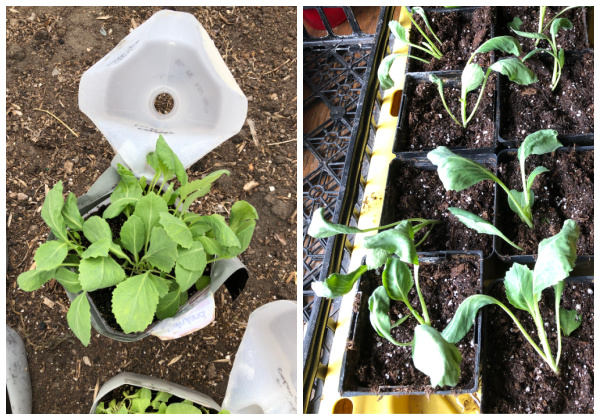
If you do winter sowing, separating the seedlings is a must. By design, we plant more than one seed into the little greenhouse containers. Separating the seedlings beforehand is also worth it if you get better-than-expected germination. Seedlings growing too close will be weaker but recover quickly when separated and planted into individual pots and grow into healthy plants.
You can skip the pots and plant directly into the garden soil if the weather is overcast and calm to reduce plant stress. Note also that small plants respond better to being separated than large plants. If the weather permits and the seedlings have true leaves, plant them out.
What plants do not respond well to being separated?
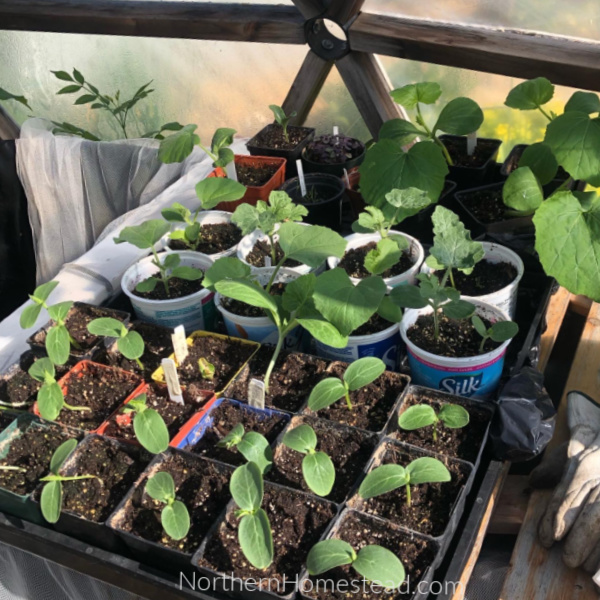
Cucurbitaceae are plants like cucumber, watermelon, musk melon, summer squash, and winter squash. These plants are susceptible; they do not like cold soil and do not tolerate any frost; they also dislike transplanting.
If you get more than one plant in one pot, cut them off without disturbing the primary seedling. Be very gentle with the seedling, and do not disturb the roots. It is hard to cut off a healthy seedling, but planting them together will yield less than one healthy seedling would.
That being said, I have successfully separated and planted cucumbers. If you are confident and know what you are doing, go for it. But as a beginner, keeping one plant per Cucurbitaceae seedling is a good idea. Cucumber seedlings can also be started in peat pots; read more here. Or in a bottomless pot for easy transplanting, read more here.
How to separate and plant a seedling
A picture says more than a thousand words, and a video says even more, right? So we took you with us into the garden and filmed the process.
Here are the 8 steps to separate and plant multiple seedlings:
1 Water the seedling well.
2 Prepare and water the hole so the moist soil embeds the bare roots.
3 Take the seedling out of the pot by turning the pot upside down. If needed, push slightly against the wall.
4 Starting from the top, gently separate the plants. The goal is not to keep the soil on the roots but to keep the roots intact.
5 Place each seedling into the prepared hole. If you have more than you got holes, keep the seedling in the pot.
6 Plant each seedling, holding it up so the roots hand down into the hole. Push the soil gently down to avoid air pockets.
7 Water well. An important thing is not to water just the top of the soil, but each single plant well in.
8 If it is sunny, shade the seedlings with a shade blanket to avoid direct sunlight for a few days.
Happy planting!
We invite you to subscribe to Northern Homestead and follow us on Instagram, Facebook, or Pinterest for the latest updates.

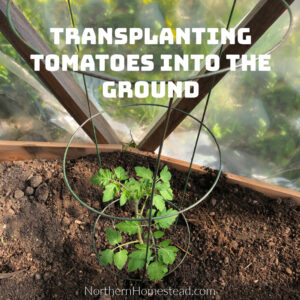
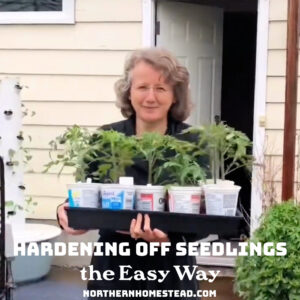
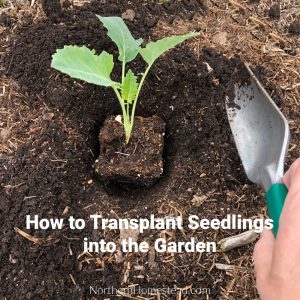
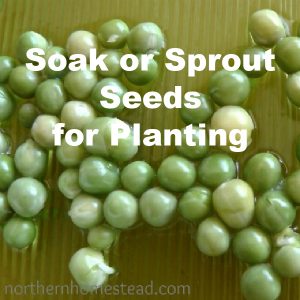
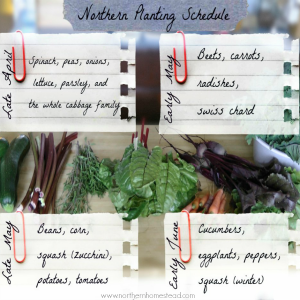
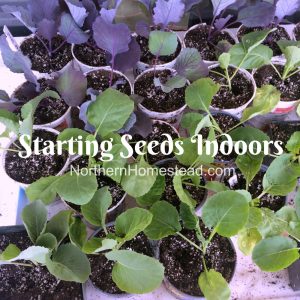
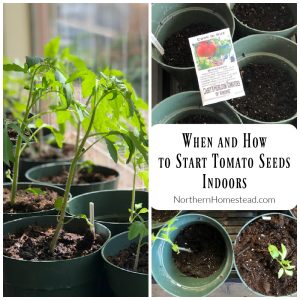
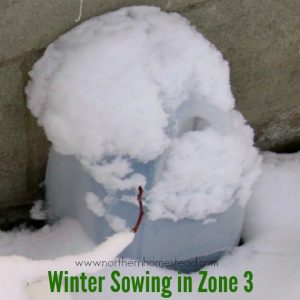
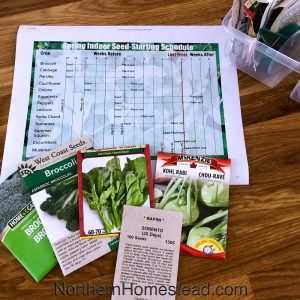
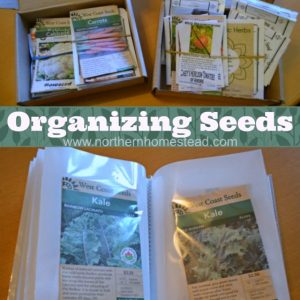

Oh man! I wish I had this information last month! I went crazy with my first time planting from seeds and had like 3-4 tomatoes per cell.. I hated killing the extras, and had I known about putting them in water, I so would have done that! Now I know for next year!
Sometimes the easy things that make a difference. Hope your tomatoes grow well, happy gardening!
I always start from seed. I live in the Arctic (Nunavik) and have a couple of hobby greenhouses. One thing I’ve noticed is that there are absolutely no pests, save for lemmings. I dread introducing alien insects, etc. with pre-planted starters. Besides, it gives me something to do during those long winter months!
Welcome Stephen, you are really up north ;). I hear you on something to do in long winters. I am so glad we can grow indoors. Hope spring is coming for you too.
Perfect. Thanks for the details. Its helping me to know how many I can put in a pot. Cheers. Can’t wait to check out the rest of your site!
I have planted a grapefruit seed that has four shoots from one seed. I am not sure what to do – do i cut the weaker ones, or attempt to separate them or just let them all grow???!
Let me know, its my first time growing grapefruit.
Kassandra, we don’t grow grapefruit here at our northern garden. It sounds like you have one plant, not multiple, since you only planted one seed. In order to get a stronger plant I think you are better of to prune all but one stem back. But again, I have no experience, just common sense.
Thank you so much!! You made my life so much easier and the tomatoe’s too😂 omg I was foolishly just gonna take my chances and let them stay together, because I really didnt like the whole separating at roots idea. So thanks again😍🙋
This may be a silly question, so I apologize in advance! I am starting a garden for my first time and I planted a few seeds in each pot just in case some didn’t come up. Right now it is sweet peppers, jalapeno and onion. I have gotten a few sprouts in each, should I pull the extra and leave just one in there? Or can I leave them and separate when it’s time to transplant? I appreciate your knowledge . Thanks!!
It is not a silly question. As I explain in the post it does depend on what plant it is and in what stage they are. Peppers and jalapeno can be pulled at the sprouting stage and plant in a new pot if you want more plants, this is also called pricking. Onions love growing together, you can plant 3-4 together in clusters, but give them more room between clusters. Or do the same as with peppers, prick them out.
I planted some lavender from seed in a pot, and there are several sprouts in the same pot. Is this healthy, or should I transplant the seedlings?
I believe there are 5 sprouts, and the pot’s diameter is only about 6inches. There’s especially these two sprouts in the pot that aren’t spaced apart at all, and it seems they’ve woven together somehow? Also, the sprouts were raised completely indoors. Should I be worried if I wanted to move the sprouts outdoors?
It is better to separate them. They only will compete with each other if left together. Before moving them outside for good, harden them off.
Well this was my first time doing gardening. Little did I know how many seeds should I put in one pot.
I put all 50 seeds in one pot and now there are so many small small saplings.
What should I do now ?
Smile and learn from it. Depending on what it is you can still divide some out to plant just the way I describe in the blog post. Or cut 49 away and plant one. You will only get better with practice.
What about corn plants. I live in the PNW. I have never planted corn starts before. They cane 4 together. Should I kill off 3 or 2. Do corn plants like to grow together like kohlrabi?
Good question. I’m no expert on corn, since it is a bit too cold here for it to grow well. But as far as I know corn does not like to grow too close and also is not too happy to be transplanted. I think I would kill the extra plants and keep one.